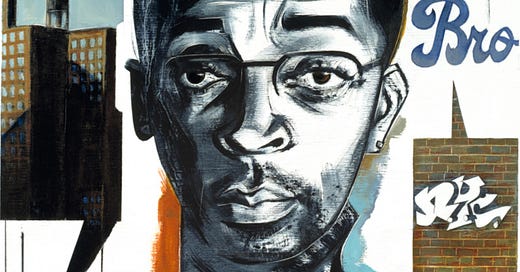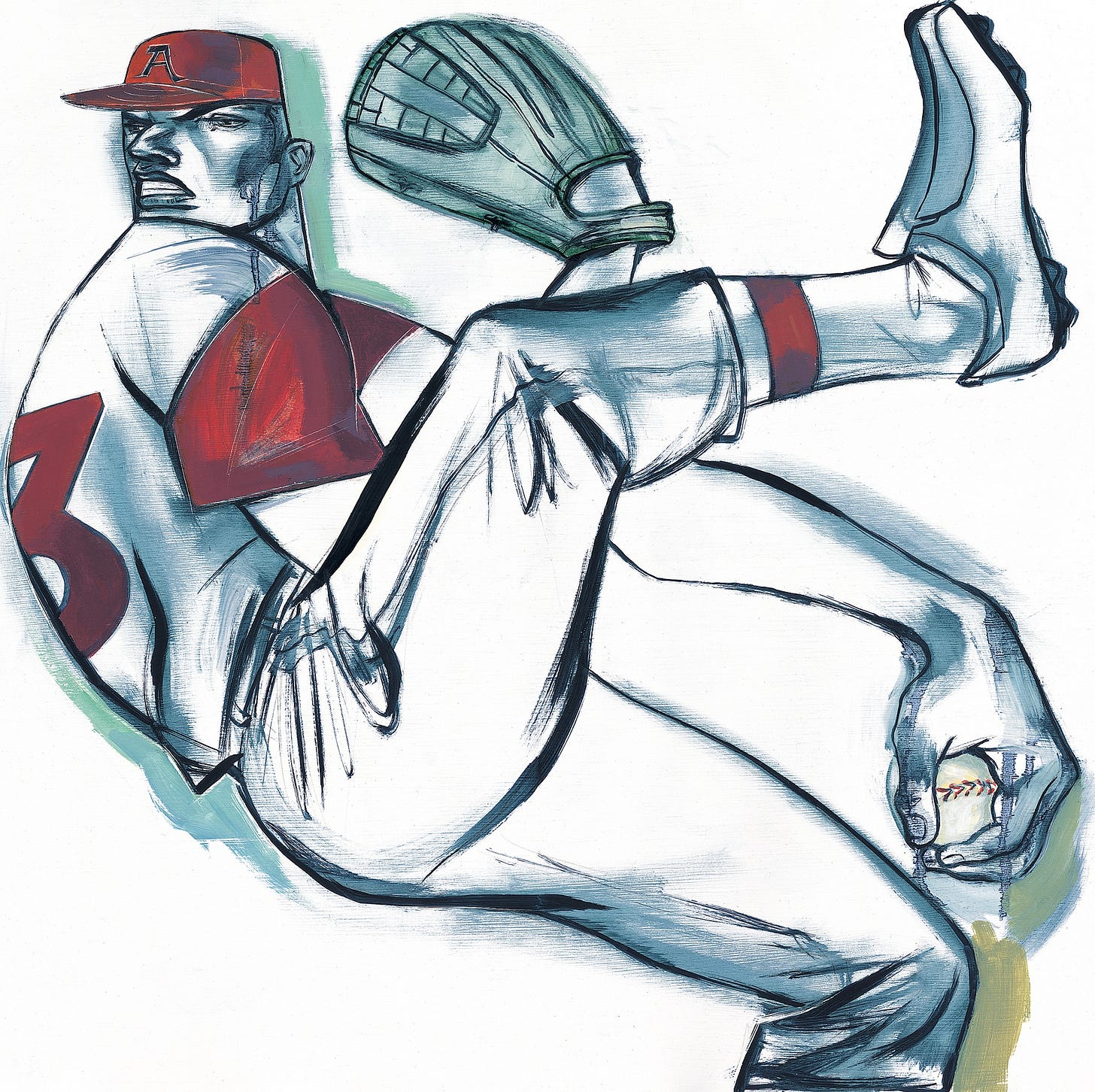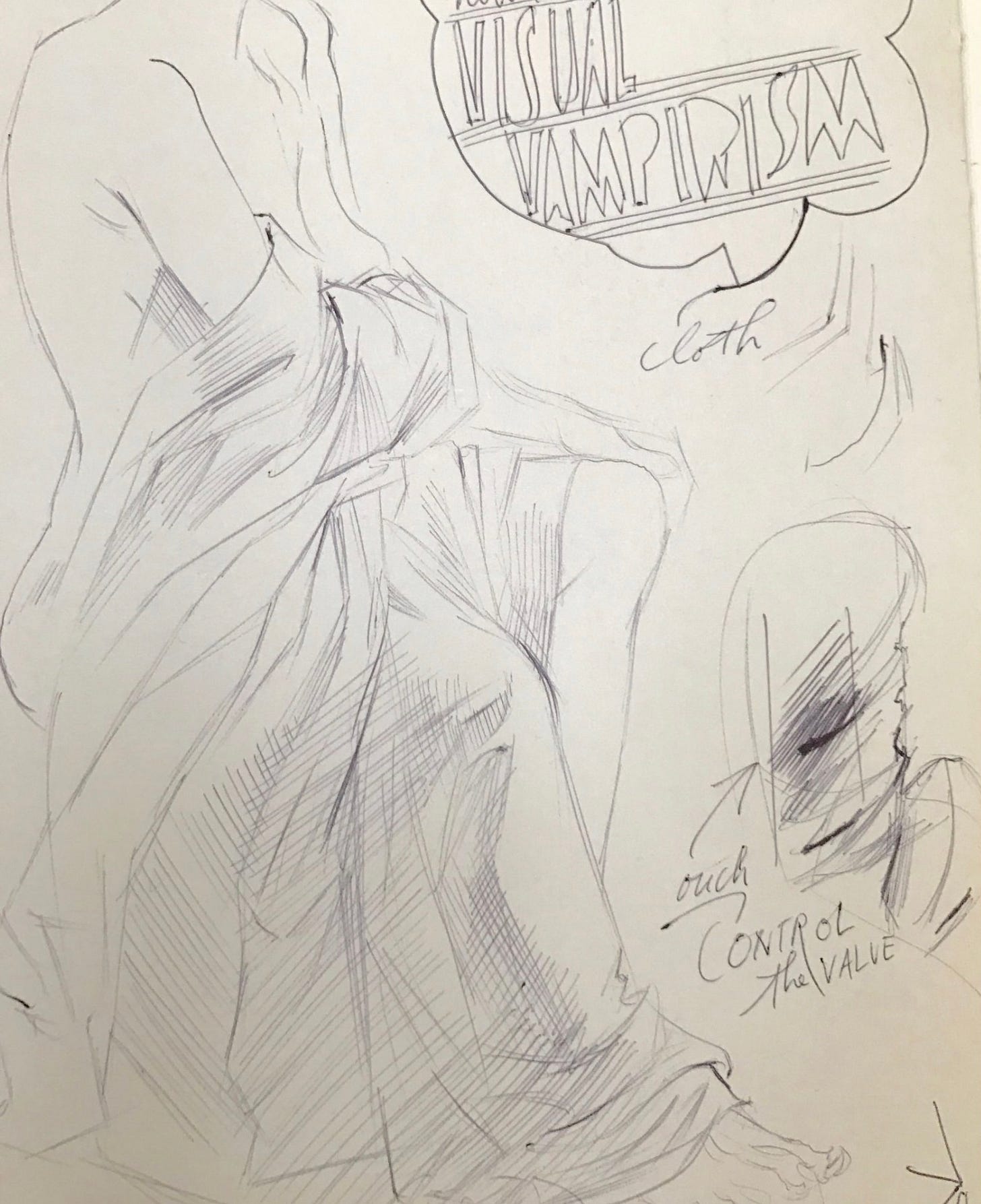I draw a lot of portraits. Celebrity portraits involve multiple photographs, I haven’t drawn any famous folk through observation…and that’s a problem. Photo portraits have a definite line between the face and the background—a flat edge. The face is not a tabletop, even a pointed nose isn’t a sharp fold, but all the features are just asking for edges.
If we are drawing with lines and are drawing forms, lines on edges are kind of unavoidable. Nobody is lying, just drawing the shape of things. Yes, but…I will add my diatribe about colouring books. Colouring books are ok for adults, you have chosen the activity and there is useful cognitive benefit. For kids on the other hand, I see the colouring book as a visual prison. It reinforces the flatline edge world and robs them of making their own drawn edges. I won’t even start on what anime has done to kids drawing. A paper table cloth, some crayons, and drawing from their imagination used to be a family restaurant past-time, now it’s iPhones.
Most people start drawing by copying something, I loved Spider-Man comics and MAD magazine as a kid. But MAD inspired me to make up my own stories, the wildly different artists in each issue had their own way to express themselves, I saw that as a goal. The present Disneyfication of childhood is expressed in the hard edge, easy to copy characters that look like they were created in a lab (because they were). Monetization trumps meaning.
The edge, the outline, the colouring book, the Little Mermaid, leave us on the surface of things. How to get something into our heads or to get under our own skin is to embody knowledge and to understand the breadth and depth of an experience. Drawing a line around a form should be filled with the profound knowledge of the receding form that exists but is not seen—like the beautiful drawing above from the late 1300’s in Iran.
I fought with my students edge drawings this week as we tackled the world of drawing cloth and defining form. The cloth was kicking their ass as they attempted to wrangle it by roping the over abundant forms with lines like futile lassos thrown at wild horses. The drawings devolved into overcooked spaghetti or a mass of snakes as they kept drawing what they saw (or thought they saw) without expressing what it meant.
The edge can be a beautiful thing, the brilliance of exquisite 2D design is in the play between positive and negative space. The edge line I am talking about is a razor wire fence that keeps us locked away from seeing the nuance of space and form. We shouldn’t reduce the world when we draw, I call it the Triumph of Under-Expressionism, rather we should be unlocking how we see and experience the visual through the capture of what isn’t seen in our marks. And burn your damn colouring books!










But your lines do not lack certainty!
“The present Disneyfication of childhood is expressed in the hard edge”. Now that’s a great line. And speaking of lines. Nobody masters the line in figure drawing better than Joe Morse.